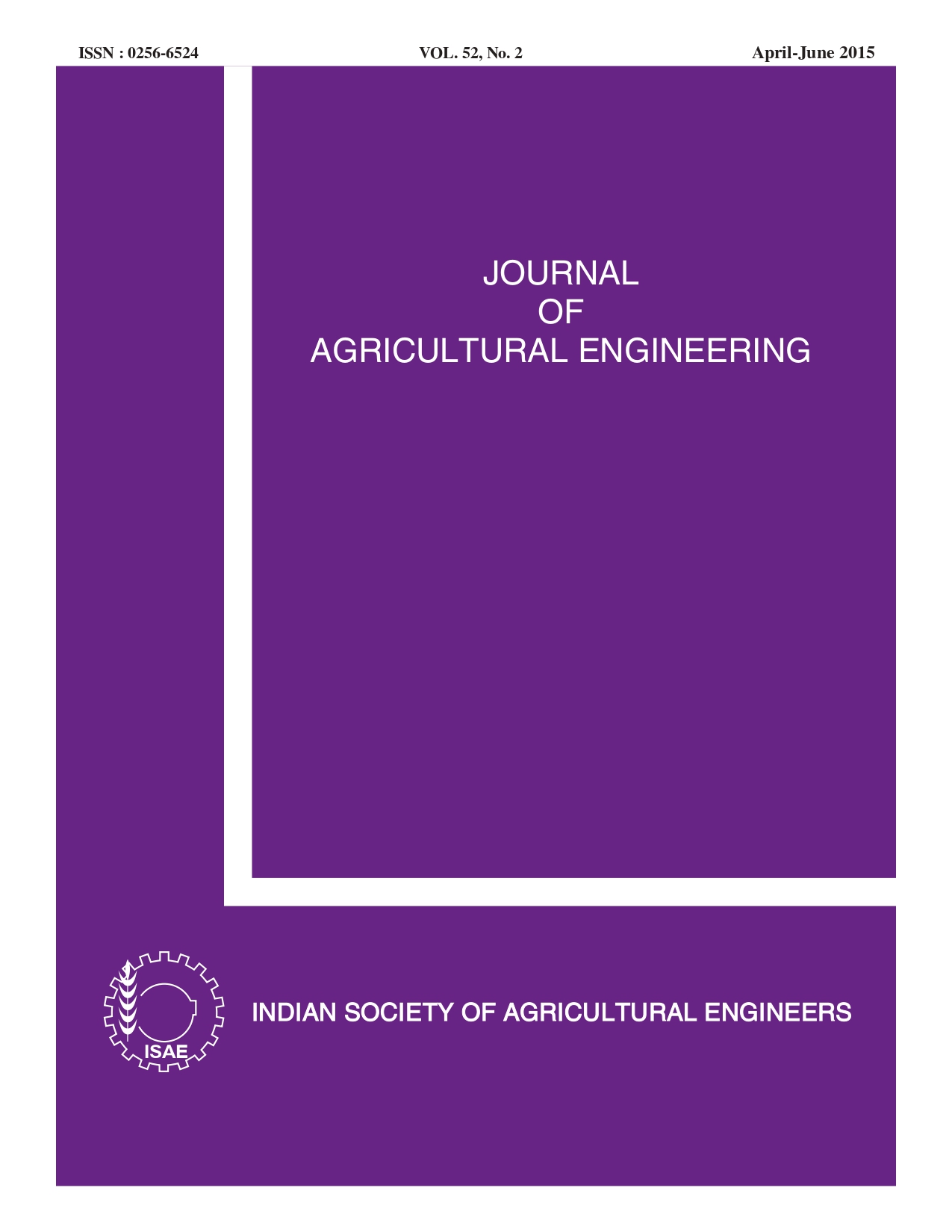Effect of Saddle Height and Crank Length on Physiological and Psychophysical Responses of Indian Agricultural Workers during Pedalling
DOI:
https://doi.org/10.52151/jae2015522.1571Keywords:
Pedalling, saddle height, crank length, physiological responses, psychophysical responsesAbstract
Pedalling is the most efficient method of utilizing human muscle power. Pedal power use through chain and sprocket mechanism for rotary motion has low efficiency. The efficiency of dynapod for the same motion depends on several design parameters, including saddle height and crank length. In this study, the saddle height and crank length were optimised on the basis of physiological and psychophysical responses during pedalling. The study demonstrated that saddle height equal to 0.96 of trochanteric height of subjects and crank length of 180 mm is optimal for design of a dynapod.
References
Agrawal K N; Singh R K P; Satpathy K K. 2009. Isometric strength of agricultural workers of Meghalaya: A case study of Indian population. Int. J. Ind. Ergon., 39(6), 919-923.
Corlett E N; Bishop R P. 1976. A technique for assessingpostural discomfort. Ergon., 19(2), 175-182.
Danny T; Landwer G E. 2000. The effect of pedal crank arm length on joint angle and power production in upright cycle ergometry. J. Sports Sci., 18(3), 153-161.
Devangan K N; Gogoi G; Owary C; Gorate D U. 2010. Isometric muscle strength of male agricultural workers of India and the design of tractor controls. Int. J. Ind. Ergon.,40(5), 484-491.
Gonzalez H; Hull M L. 1989. Multivariable optimisation of cycling biomechanics. J. Biomech., 22(11-12), 1151-1161.
Hamley E J; Thomas V. 1967. Physiological and postural factors in calibration of the bicycle ergometer. J. Physiol., 191(2), 55-56.
Holmes J C; Pruitt A L; Whalen N J. 1994. Lower extremity overuse in bicycling. Clin. Sports Med., 13(1), 187-205.
Jeukendrup A E. 2002. High-performance Cycling. Campaign, IL: Human Kinetics.
Lawrence S P; deVries H A. 1976. The effect of saddle height on oxygen consumption during bicycle ergometer work.Med. Sci. Sports Exerc., 8 (2), 119-121.
Legg S J; Mahanty A. 1985. Comparison of five methods of carrying a load close to the trunk. Ergon., 28(12), 1653-1660.
Maritz J S; Morrison J F; Peter J; Strydom N B; Wyndham C H. 1961. A practical method of estimating an individual’s maximum oxygen uptake, Ergon., 4, 97-122.
Martin J C; Spirduso W W. 2001. Determinants of maximal cycling power: crank length, pedalling rate and pedal speed. Eur. J. Appl. Physiol., 84(5), 413-418.
Martin J; Malina R; Spirduso W. 2002. Effect of crank length on maximal cycling power and optimal pedalling rate of boys aged 8-11 years. Eur. J. Appl. Physiol., 86(3), 215-217.
Nordeen-Snyder K S. 1977. The effect of bicycle seat height variation upon oxygen consumption and lower limb kinematics. Med. Sci. Sports Exerc., 9(2), 113-117.
Peveler W W; Bishop P A; Smith J; Richardson M; Whitehorn E. 2005. Comparing methods for setting saddle height in trained cyclists. J. Exercise Physiol. online, 8(1), 51-55.
Peveler W W; Pounders J D; Bishop P A. 2007. Effects of saddle height on anaerobic power production in cycling. J. Strength Cond. Res., 21(4), 1023-1027.
Peveler W W. 2008. Effects of saddle height on economy during cycling. J. Strength Cond. Res., 22(4), 1355-1359.
Price D; Donne B. 1997. Effect of variation in seat tubeangle at different seat heights on submaximal cycling performance in men. J. Sports Sci., 15(4), 395-402.
Shephard R J. 1967. Physiological determinants of cardiorespiratory fitness. J. Sports Med. Phy. Fit.,7, 111-134.
Tiwari P S; Gite L P; Majumdar J; Pharade S C; Singh V V. 2010. Push/pull strength of agricultural workers in central India. Int. J. Ind. Ergon., 40(1),1-7.
Tiwari P S; Gite L P; Pandey M M; Shrivastava A K. 2011. Pedal power for occupational activities: Effect of power output and pedaling rate on physiological responses. Int. J. Ind. Ergon., 41, 261-267.
Too D; Landwer G E. 2000. The effect of pedal crank arm length on joint angle and power production in upright cycle ergometry. J. Sports Sci., 18(3), 153-161.














